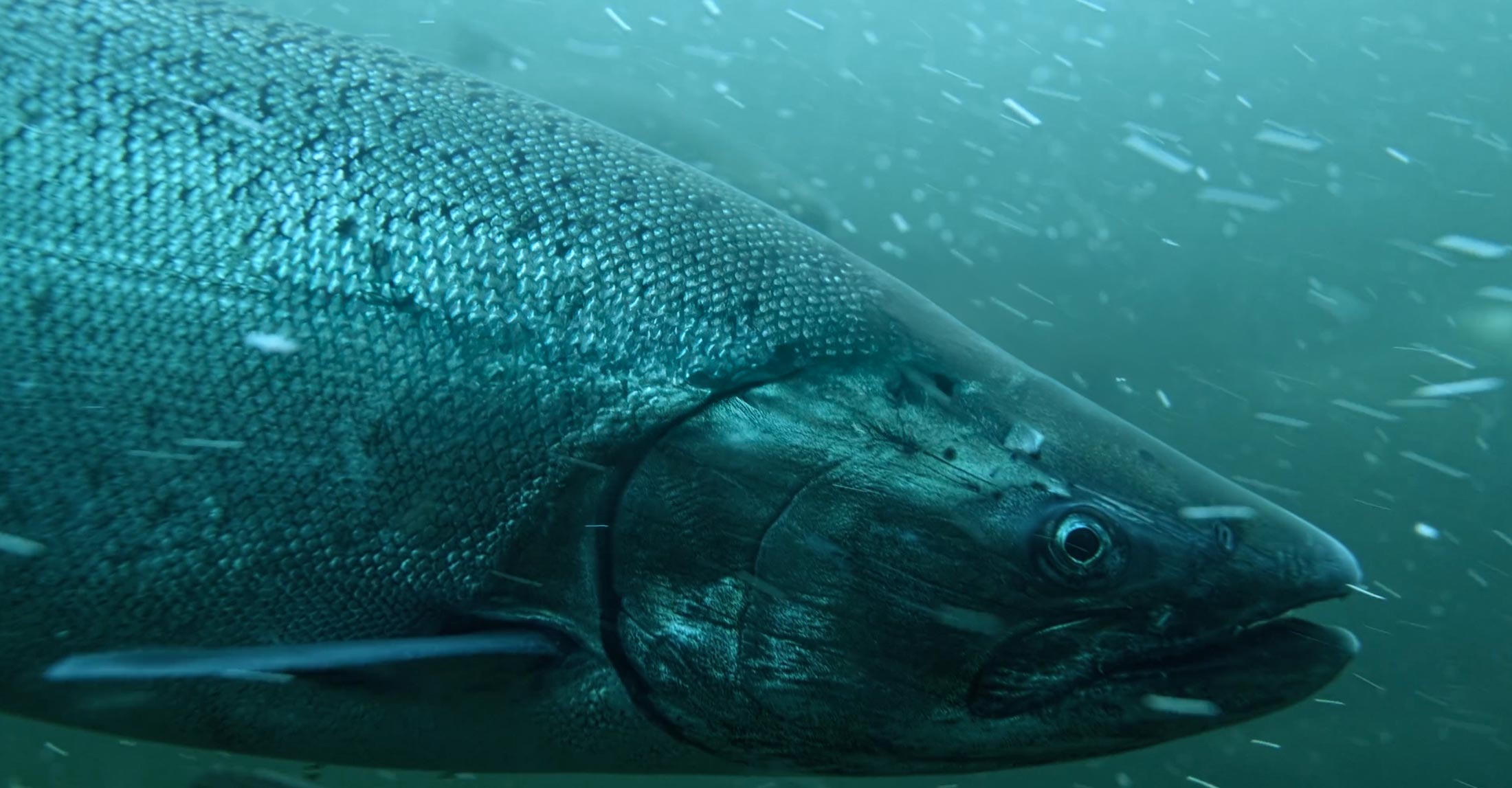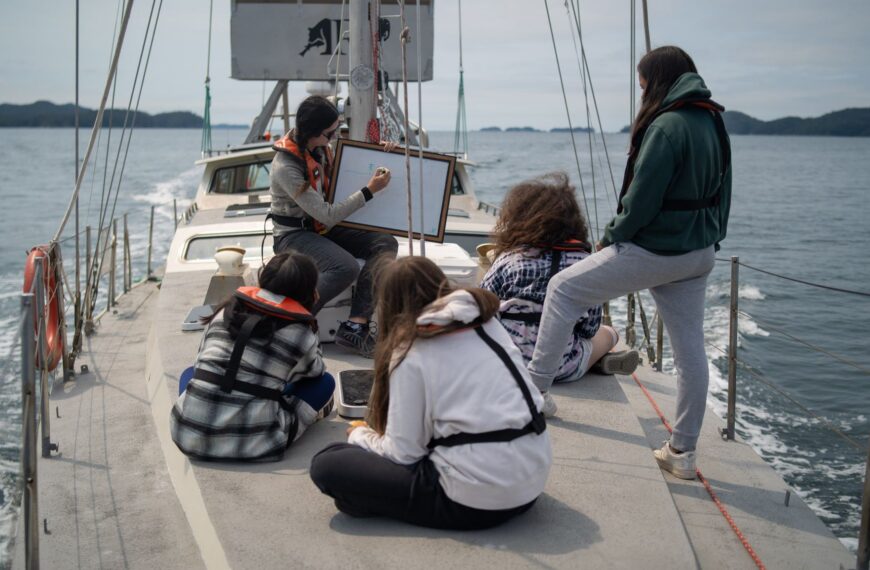Chinook salmon exhibit long-term rearing and early marine growth in the Fraser River, B.C., a large urban estuary
A new study has used salmon ear bones (otoliths) and genetic fingerprinting to confirm the importance of the Fraser estuary for juvenile Chinook salmon.
“The Fraser estuary is an expansive, silty ecosystem, which makes it difficult to study fish movements. Using modern techniques, we were able to confirm that this threatened population of Chinook salmon rely heavily on the estuary during their emigration to the ocean, which is a critical period that influences their future survival.”
Lia Chalifour, lead author
A new paper published by a team of researchers, including Raincoast scientists, and led by UVic’s Lia Chalifour, finds additional evidence of the importance of the Fraser estuary as critical habitat for Chinook salmon.
The paper, “Chinook salmon exhibit long-term rearing and early marine growth in the Fraser River, B.C., a large urban estuary“, was published in Canadian Journal of Fisheries and Aquatic Sciences (open access).
Using tiny salmon ear bones, or otoliths, the researchers were able to demonstrate that Chinook salmon from Harrison River rely on the Fraser estuary for one to two months while they feed and grow. These findings underscore the critical nature of this habitat for the persistence and recovery of Chinook salmon.
Harrison River Chinook used to be the most productive Chinook salmon population in the Fraser, but has been declining for generations and is now considered threatened by the Committee on the Status of Endangered Wildlife in Canada (COSEWIC).
Knowing now that Chinook salmon rely on estuarine habitat as juveniles, we must work to protect and restore this estuary.
“This study shows that young Harrison River Chinook rely heavily on the estuary, and in particular the fresh and brackish marsh on the Fraser delta, before they enter the ocean. Since the vast majority of these habitats have already been lost or degraded, this stage may be a bottleneck that reduces their productivity.”
Dave Scott, co-author
Citation
Chalifour, L., D. C. Scott, M. MacDuffee, S. Stark, J. F. Dower, T. D. Beacham, T. G. Martin, and J. K. Baum. 2020. Chinook salmon exhibit long-term rearing and early marine growth in the Fraser River, B.C., a large urban estuary. Canadian Journal of Fisheries and Aquatic Science DOI: 10.1139/cjfas-2020-0247
Abstract
Estuaries represent a transition zone for salmon migrating from freshwater to marine waters, yet their contribution to juvenile growth is poorly quantified. Here, we use genetic stock identification and otolith analyses to quantify estuarine habitat use by Chinook salmon (Oncorhynchus tshawytscha) – the Pacific salmon species considered most reliant on this habitat – in Canada’s most productive salmon river, the Fraser. Two years of sampling revealed subyearling migrant (“ocean-type”) Chinook from the Harrison River to be the estuary’s dominant salmon population throughout the emigration period. These Chinook salmon were caught predominantly in the estuary’s brackish marshes but shifted to more saline habitats as they grew. Otolith analyses indicated that these Chinook salmon have wide-ranging entry timing (from February to May), and longer estuarine residency (weeks to months, mean 41.8 days) than estimated by prior studies, but similar daily growth rates (mean 0.57 mm +/- 0.13 SD) across entry dates and residency periods, implying sufficient foraging opportunities throughout the emigration period and habitats. Together, these results suggest that estuarine habitat is more important for early marine growth of subyearling migrant Chinook salmon than previously recognized.
Select figures
Figure 1

Figure 2

Figure 4

Affiliations
- Department of Biology, University of Victoria, Victoria, BC Canada
- Raincoast Conservation Foundation, Sidney, BC Canada
- Tsawwassen Shuttles Incorporated, Tsawwassen, BC Canada
- School of Earth and Ocean Sciences, University of Victoria, Victoria, BC Canada
- Pacific Biological Station, Fisheries and Oceans Canada, Nanaimo, BC Canada
- The Conservation Decisions Lab, Department of Forest and Conservation Sciences, University of BC, Vancouver, BC Canada
You can help
Raincoast’s in-house scientists, collaborating graduate students, postdoctoral fellows, and professors make us unique among conservation groups. We work with First Nations, academic institutions, government, and other NGOs to build support and inform decisions that protect aquatic and terrestrial ecosystems, and the wildlife that depend on them. We conduct ethically applied, process-oriented, and hypothesis-driven research that has immediate and relevant utility for conservation deliberations and the collective body of scientific knowledge.
We investigate to understand coastal species and processes. We inform by bringing science to decision-makers and communities. We inspire action to protect wildlife and wildlife habitats.










